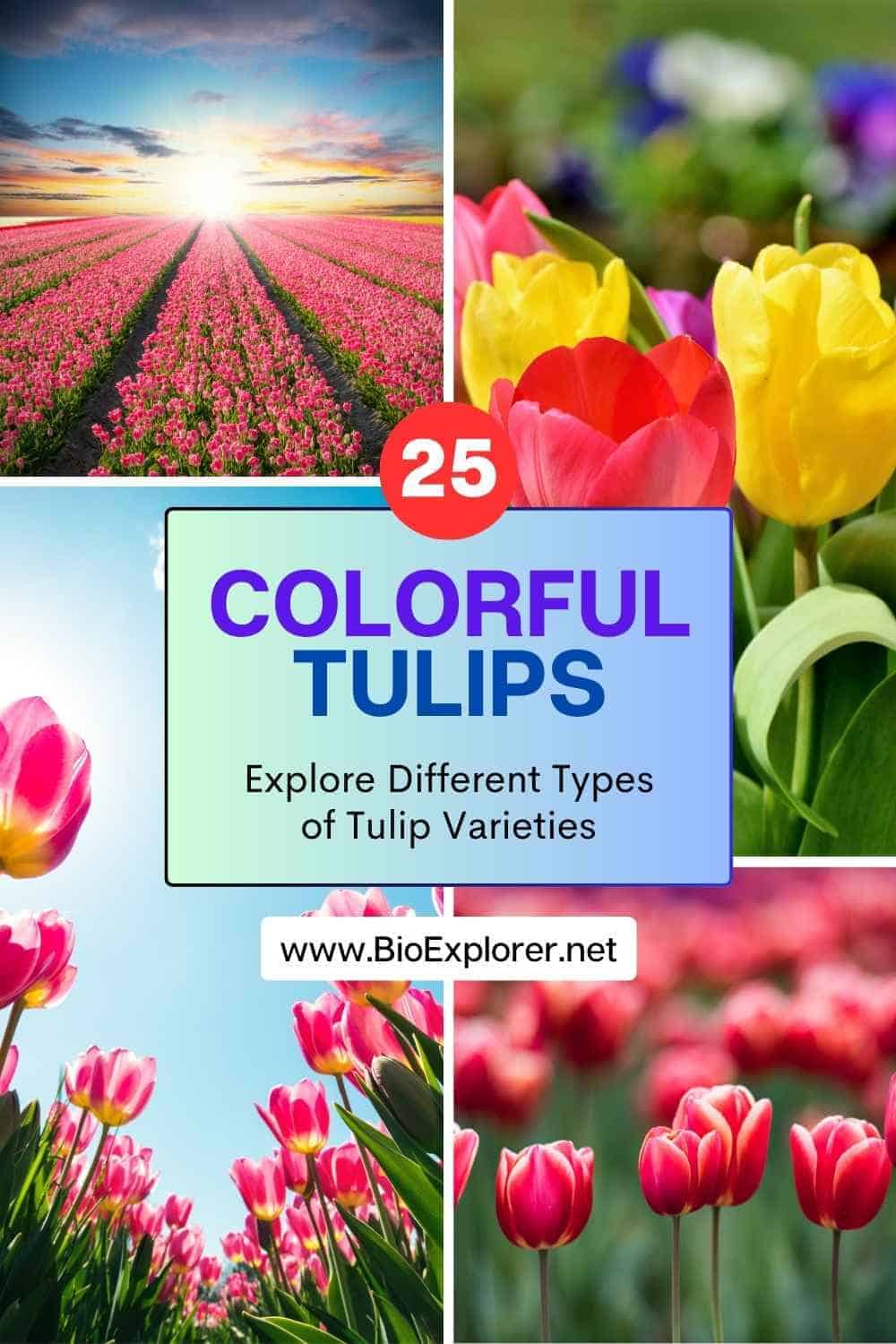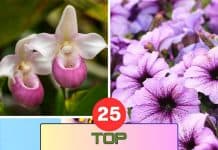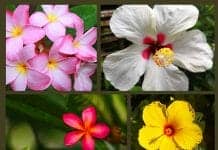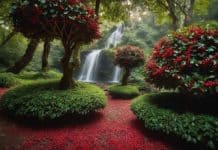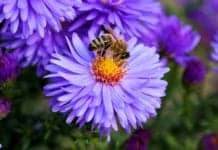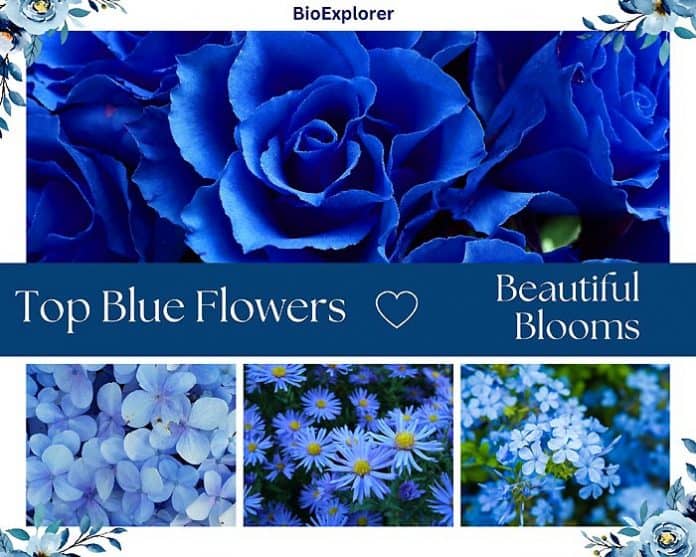
Has the allure of uniquely beautiful Blue Flowers captured your fascination? Despite their enchanting appearance, blue blossoms are surprisingly sparse due to the rarity of natural blue pigments in flora.
Our insightful article sheds light on this curious phenomenon. It brings you an extensive list of various types of captivating blue blooms for your reference. Delve into today’s post to uncloak nature’s best-kept secret: why are strikingly stunning ‘true-blue’ flowers so rare?
Table of Contents
- Why Is the Color Blue special in nature?
- Why are blue flowers rare?
- Types of Blue Flowers
- 1. Blue Himalayan Poppy
- 2. Larkspur Flower
- 3. Stemless Gentian
- 4. Virginia Bluebell
- 5. Common Chicory
- 6. Borage Borage
- 7. Wood Forget-Me-Not
- 8. Blue Lace Flower
- 9. Cornflower
- 10. Blue Daze
- 11. Blue Flax
- 12. Blue Marguerite Daisy
- 13. Colorado Blue Columbine
- 14. Azure Blue Sage
- 15. Blue Commelina
- 16. Leadwort/Plumbago
- 17. Blue Giant
- 18. Blue Pincushion
- 19. Edging Lobelia
- 20. Turquoise Ixia
- 21. Love-in-a-Mist
- 22. Blue Passionflower
- 23. Monk’s Hood
- 24. Siberian Bugloss
- 25. Butterfly Pea
- 26. Liverleaf
- 27. African Lily
- 28. Siberian Squill
- 29. Jasione Montana
- 30. Bluebell Bellflower
- 31. Baby Blue Eyes
- 32. Blue Orchid
- 33. Blue Star
- 34. Blue Violet
- 35. Blue Hibiscus
- 36. Blue Mist Shrub
- 37. Blue Daisy
- 38. Azure Aster
- 39. Dwarf Morning Glory
- 40. Fairy Thimbles
- 41. Triplet Lily
- 42. Tweedia
- 43. Georgia Blue Veronica
- Symbolism of Blue Flowers
- Frequently Asked Questions
- Do blue flowers exist in nature?
- What is the meaning of blue flowers?
- Which blue flowers are suitable for my garden?
- Can you suggest some plants with blue flowers that bloom?
- What are the blue flowers on the side of the road?
- What do the blue flowers symbolize in lord of the Flies?
- Do blue flowers appear in a variety of shades?
- Are blue flowers often used in floral arrangements?
- Do blue flowers attract bees and butterflies?
- How often do blue flowers spawn in blox?
- Can you recommend a blue flower native to a specific region?
- Which blue flower is known as a pincushion flower?
- Why do people use blue flowers often?
- Are different shades available in the variety of blue flower plants?
- Do we have native and non-native blue plants with stunning blossoms?
- What tree has blue flowers?
- When do my favorite deep-sea-hued Delphiniums blossom its spires-of-flowers?
Why Is the Color Blue special in nature?
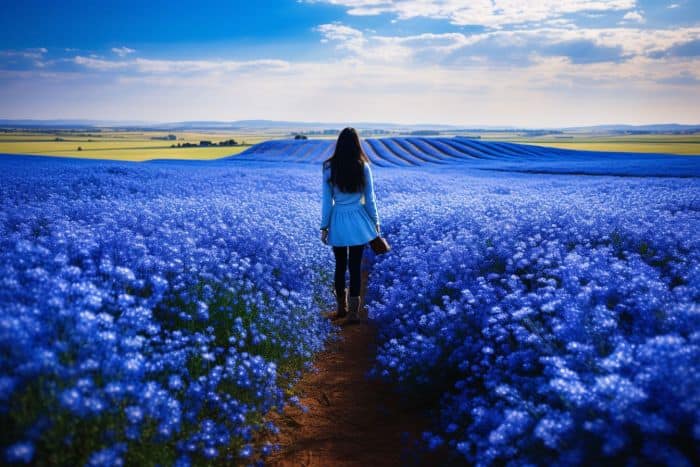
Blue is hard to find in nature. Few plants can make a true-blue color. This is because making blue pigment is hard work for them. Also, no animals are blue-pigmented. Blue rocks and minerals are few, too, as no natural compound is blue.
Tropical zone floors have some rare plants with blue leaves. But almost all other plants do not have any part of them shaded in blue colors! So, you will see less beautiful blue flowers when you walk in the park or look at your garden blooms.
This makes each sight of sky-blue flowers feel like finding rare gems!
Why are blue flowers rare?
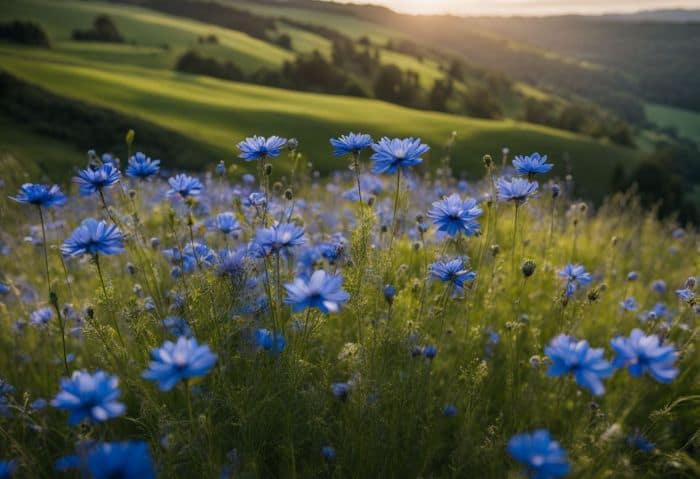
Blue flowers are not common. Less than 10 in every 100 plants have blue flowers. This is because of the way color happens in flowers. Plants can’t make blue directly.
Still, some flowers look blue to our eyes. They get their hue through special tricks such as altering the plant’s pH levels or cell structure. Blue blooms also come from evolution and pollination needs.
But seeing true blue color like sky or ocean is hard in floral world, hence they seem rare!
Types of Blue Flowers
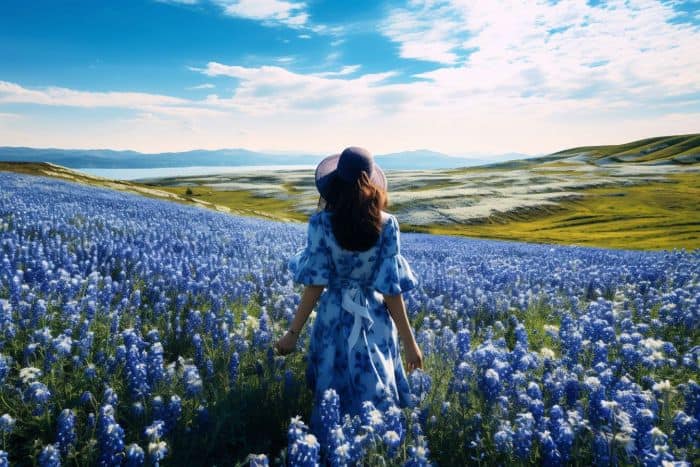
The Himalayan Blue Poppy draws masses with its bright and mesmerizing hue. Larkspur Flower possesses clustered spires of violet-blue flowers, a perfect addition to your garden. Stemless Gentian enchants gardener with its gorgeous purple-blue petals that bloom in late summer.
Virginia Bluebell[3] bestows the garden with delicate bell-shaped flowers embodying various hues, including deep blue or white. Common chicory showcases small, brilliant sky-blue blooms commonly seen on every roadside during summer.
A member of the cucumber family, Borage Borage bewitches with clusters of sapphire-blue star-shaped flowers. The Wood Forget-Me-Not fascinates viewers with a sea of tiny sky-blue blossoms during springtime’s end and early summertime period.
Their brilliant azure lace-like blossoms make Blue Lace Flowers one of the most beloved florists worldwide.
Cornflower boasts breathtaking shades from pale pink to vibrant blues while offering extended blooming seasons! Blue Daze adorns landscapes and containers alike.
1. Blue Himalayan Poppy
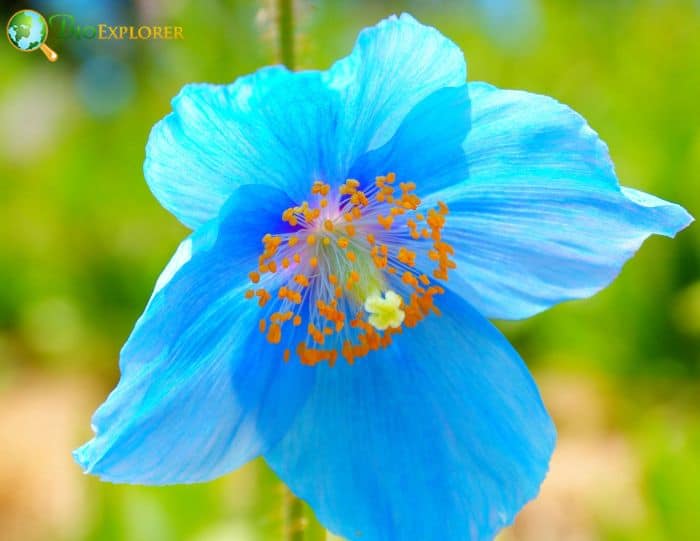
The Blue Himalayan Poppy is a sight to behold. With its true-blue color, this poppy stands out from most flowers and adds a unique touch to your garden. Treasured for their bright hue, these blossoms look just like other poppies but stand apart due to their rare shade of blue.
Each flower looks like a saucer with one big middle part and many tiny parts around it. The leaves form neat circles at the base of the plant, adding extra beauty. People love them because they are beautiful and because the warm color is so hard to find in nature.
Every gardener dream of having some Blue Himalayan Poppies in their garden space.
2. Larkspur Flower
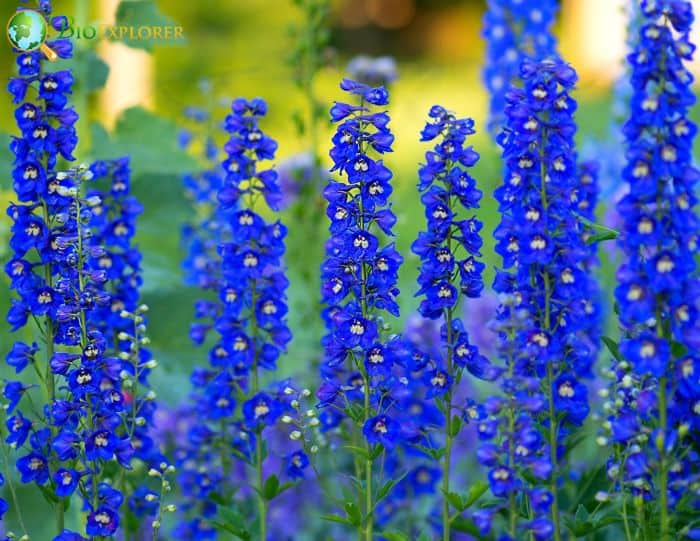
| Plantae | Ranunculales | Ranunculaceae | Delphinium | Delphinium elatum |
The Larkspur flower is a sight to behold in any garden. It springs up tall and grace-filled, catching eyes with its bold hues of color. The blue larkspur, native to western North America, stands out among all other types of blue flowers.
This sky-blue beauty symbolizes dignity and respectability due to its deep shade of blue. Many believe it carries good luck and a charm that brightens one’s day. People born in July can claim this brilliant bloom as their birth flower! Gardeners plant the larkspur for its vibrant colors but also for how it adds height and depth to their flower beds.
3. Stemless Gentian
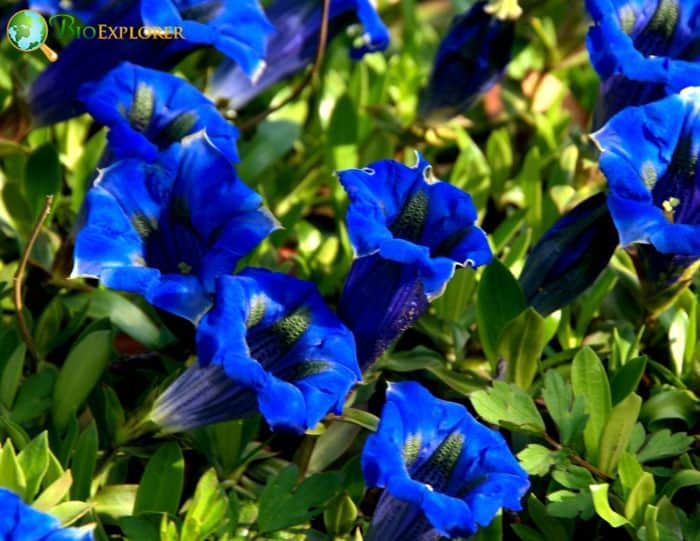
| Plantae | Gentianales | Gentianaceae | Gentiana | Gentiana acaulis |
Stemless Gentian is a small plant known for its bold colors. It grows close to the ground and forms a mat of leaves. Bright blue, yellow, red, white, or purple flowers grow from it in late spring or early summer.
Each flower looks like a trumpet and adds color to gardens. Many people in Europe put this plant in their gardens on purpose! The Stemless Gentian loves high places like mountains, too.
This is one flower that can really light up a garden with its rich hues!
4. Virginia Bluebell
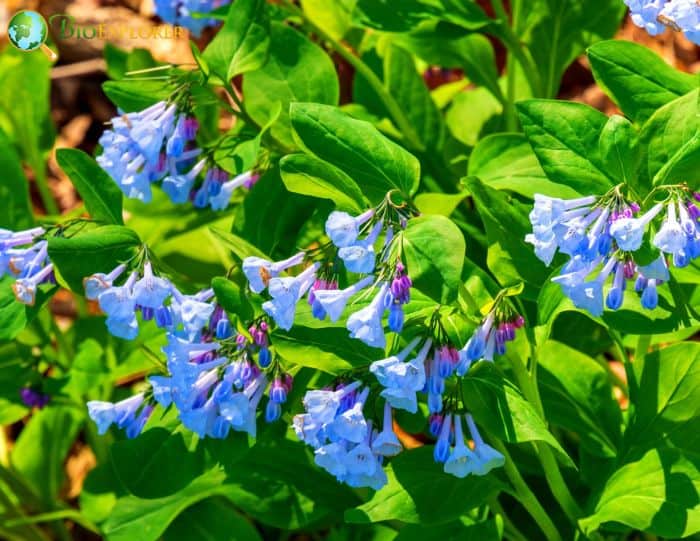
| Plantae | Boraginales | Boraginaceae | Mertensia | Mertensia virginica |
The Virginia Bluebell is a stunning blue flower. In the spring, this flower blooms into rare trumpet shapes. The color of these blooms starts as pink buds. The color changes to a lovely blue shade as they grow and open.
This flower belongs to the Borage Family, with around 40 types of herb-like plants bearing blue, bell-shaped flowers. Its beautiful blue blossoms are unique in nature, making it an excellent choice for adding true blue pops to your garden scenes.
5. Common Chicory
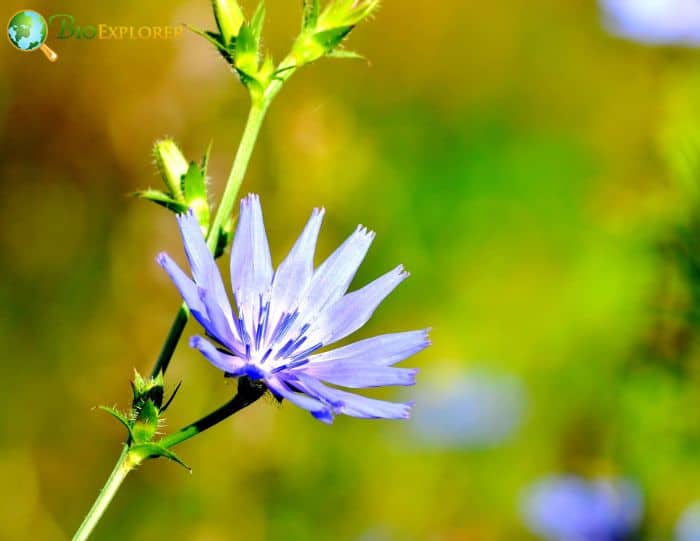
| Plantae | Asterales | Asteraceae | Cichorium | Cichorium intybus |
Common Chicory lights up any garden with its sky-blue color. Take a closer look; you’ll see blue anthers and styles on each flower. Don’t just love it for the bright blooms, though! You can also eat chicory leaves.
Use them in salads or cook them like other veggies.
This beautiful blue flower comes from a place around the Mediterranean Sea. Finding such brilliant blue flowers is uncommon, so they make gardens stand out. Every gardener should consider planting Common Chicory for its vibrant colors and useful leaves.
These flowers will become your favorite among many flowers as they bring their own unique shades of blue into your green world.
6. Borage Borage
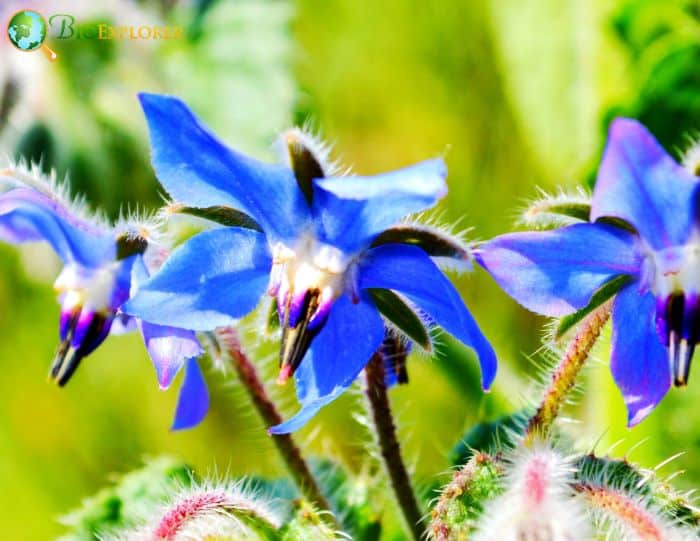
| Plantae | Boraginales | Boraginaceae | Borago | Borago officinalis |
Borage Borage is a cute plant with blue star-like flowers. These flowers can turn from blue to purple. You can use Borage flowers to add taste to your fruit or as a neat garnish on your plate.
Some gin drinks have these pretty petals in them, too! So, not only are they nice to look at, but you can eat them too!
7. Wood Forget-Me-Not
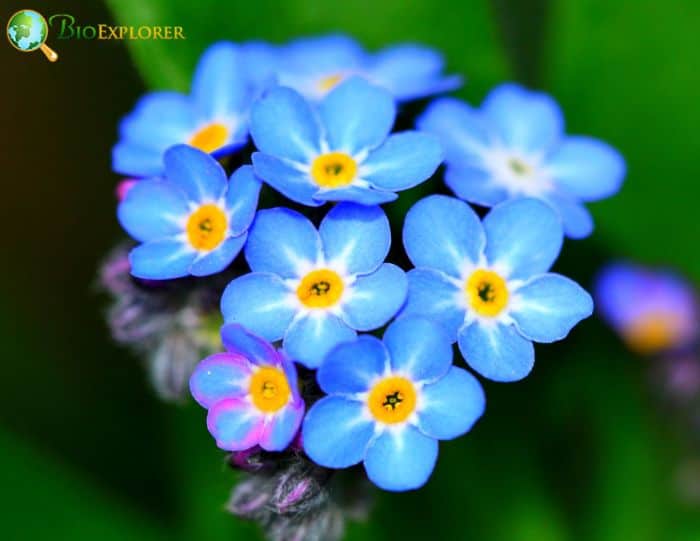
| Plantae | Boraginales | Boraginaceae | Myosotis | Myosotis sylvatica |
Wood Forget-Me-Not is a kind of blue flower. Its color can change from pink to blue as the petals mature. This plant is small and only grows to be a few inches tall. Bright blue flowers have five parts to each petal on this plant.
You will often see Wood Forget-Me-Not in old and wet woods or at the side of paths in forests. Some people even have this lovely flower in their gardens.
8. Blue Lace Flower
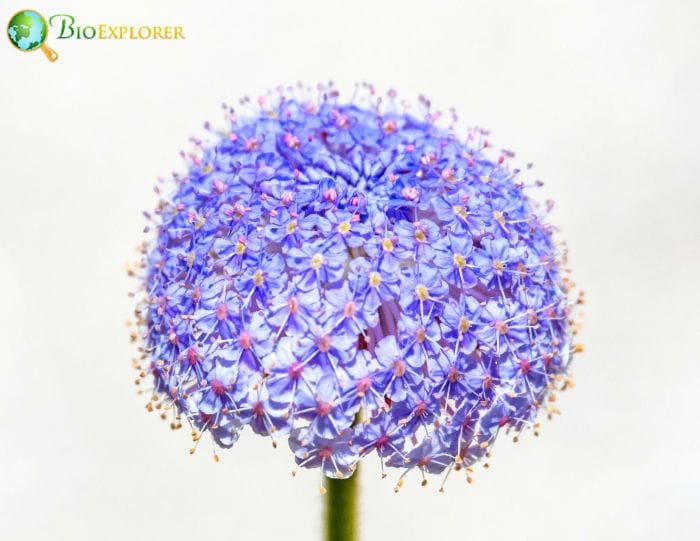
The Blue Lace Flower is part of the parsley family. It comes from Australia and is often seen there. Since its introduction in 1828, it has been a yearly favorite for many gardeners.
The blossoms look like tiny stars shaped into round balls. They come in colors like sky blue or purple. This flower looks very much like Queen Anne’s lace, too! Such beautiful blue flowers can light up any garden with their stunning shade and shape.
9. Cornflower
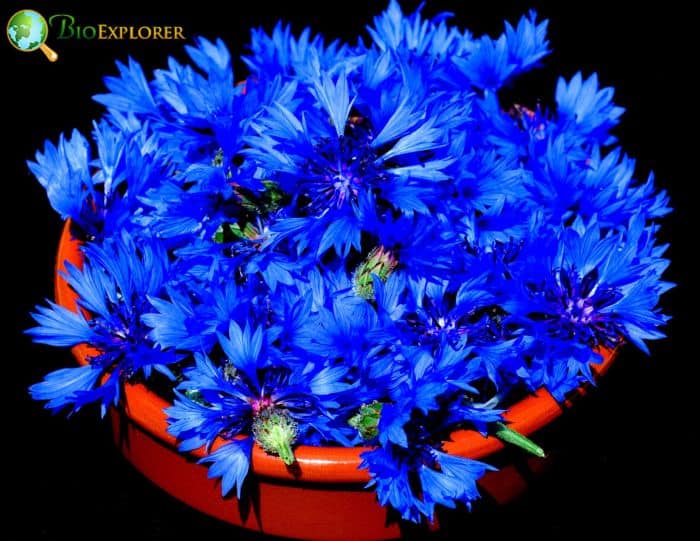
| Plantae | Asterales | Asteraceae | Centaurea | Centaurea cyanus |
Cornflower is also called the bachelor’s button. It comes with pretty heads in colors like blue, pink, or white. The sky-blue ones are very famous! This flower has both male and female parts inside.
The pigments make the cornflower blue. Other times, they can be pink, white, red or purple. Put them in your garden to get a pop of color!
10. Blue Daze
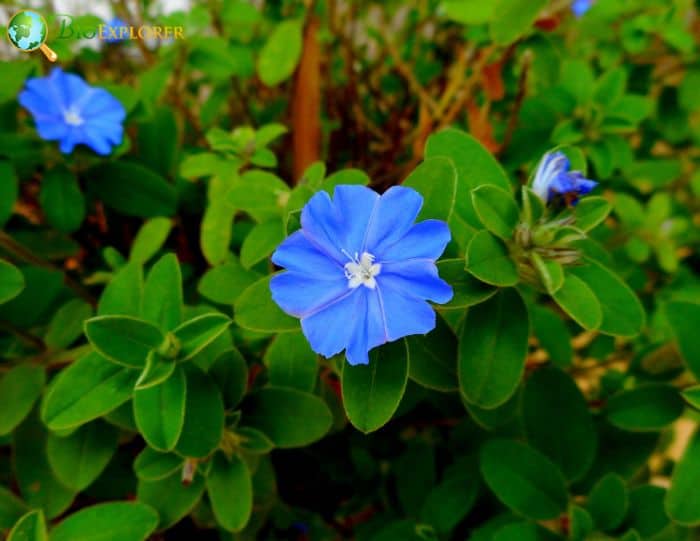
| Plantae | Solanales | Convolvulaceae | Evolvulus | Evolvulus glomeratus |
Blue Daze, also known as evolvulus, is a favorite for many gardeners. It’s perfect for hanging in baskets. This plant loves containers and spills over the edges – like a bright blue waterfall! The oval-shaped green leaves form a nice contrast with its beautiful blue flowers.
As an annual plant, Blue Daze adds charm to gardens every year. Its true blue blooms are rarely seen in other plants, so gardeners love it!
11. Blue Flax
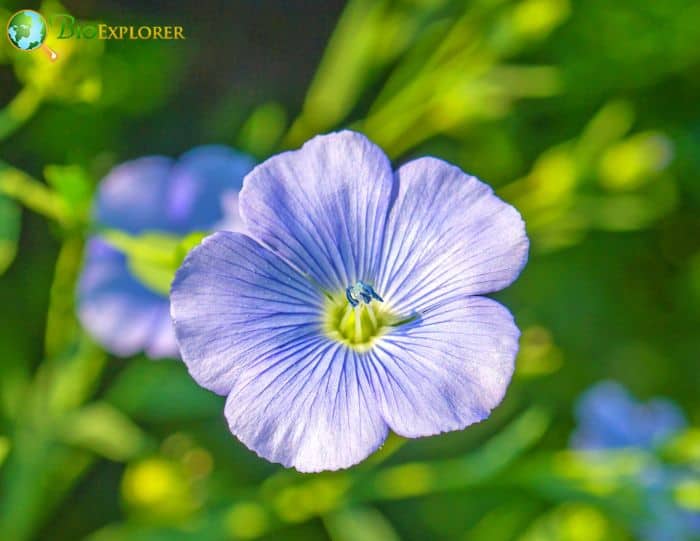
| Plantae | Malpighiales | Linaceae | Linum | Linum lewisii |
Blue Flax is a pretty plant that brings joy to your garden. It has blue-green leaves that look like needles. This plant makes flowers in many shades of blue. Some might be white, others may be deep blue.
Each flower has five petals. Blue Flax will bloom a lot over two or three months, starting in late spring. This lovely plant comes from Europe and Western Asia. Many people love to use it as a showpiece in their gardens.
12. Blue Marguerite Daisy
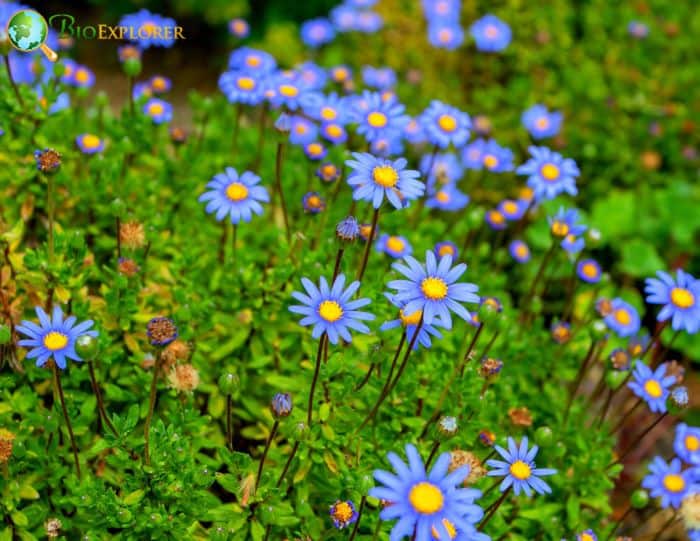
| Plantae | Asterales | Asteraceae | Felicia | Felicia amelloides |
The Blue Marguerite daisy is a bright spot in any garden. Also called Felicia amelloides shows off its true-blue color from South Africa to the Canary Islands. It loves the sun and gives you many small flowers all season long.
Each flower pairs deep blue petals with a sunny yellow center. In your own yard, this plant can say “peace” and “come in” without using words.
13. Colorado Blue Columbine
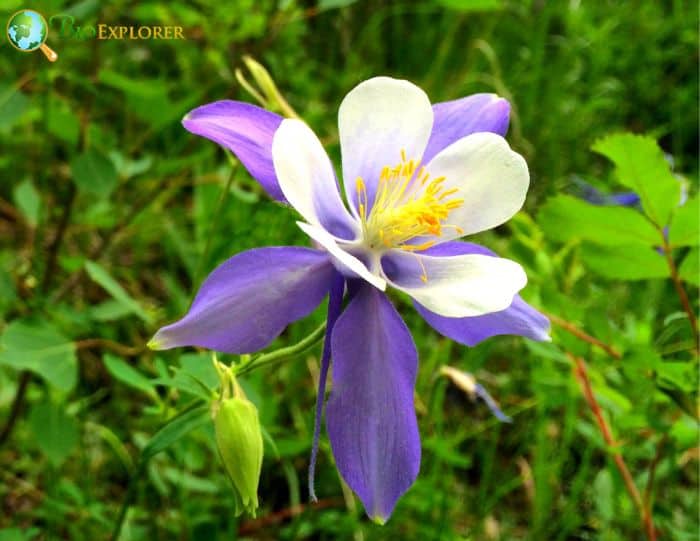
| Plantae | Ranunculales | Ranunculaceae | Aquilegia | Aquilegia coerulea |
The Colorado Blue Columbine is a pretty flower. It’s the state flower of Colorado. This plant is part of the Aquilegia caerulea James, orth. var. species and falls under the Ranunculaceae family.
This bloom can grow in light blue shades, and many people put it in their gardens for its looks. The name “coerulea” comes from Latin because it means pale blue – just like this columbine! Even if you don’t live in Colorado, you might also want to add this lovely flower to your garden.
14. Azure Blue Sage
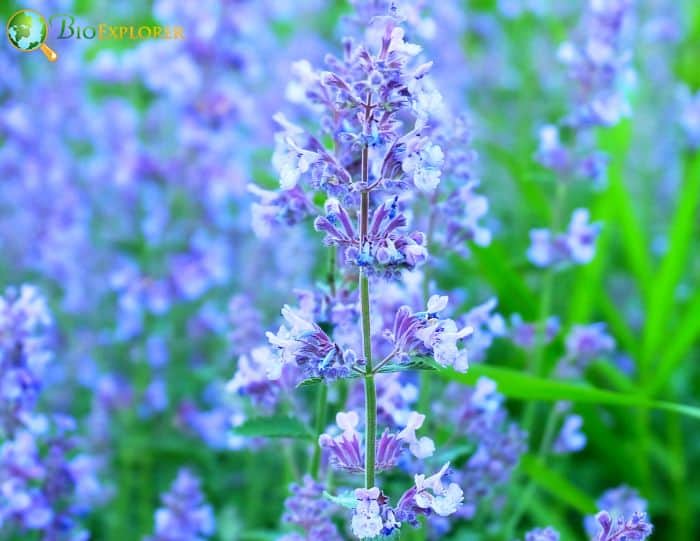
| Plantae | Lamiales | Lamiaceae | Salvia | Salvia azurea |
The Azure Blue Sage, or Salvia azurea, is a flower full of bright blue blooms. You can see these flowers from the summer till fall. Some might even have shades of purple! They grow best in sandy soil or shallow-rocky ground, mostly in the Central and Eastern United States.
It’s an amazing sight to behold in your garden!
15. Blue Commelina
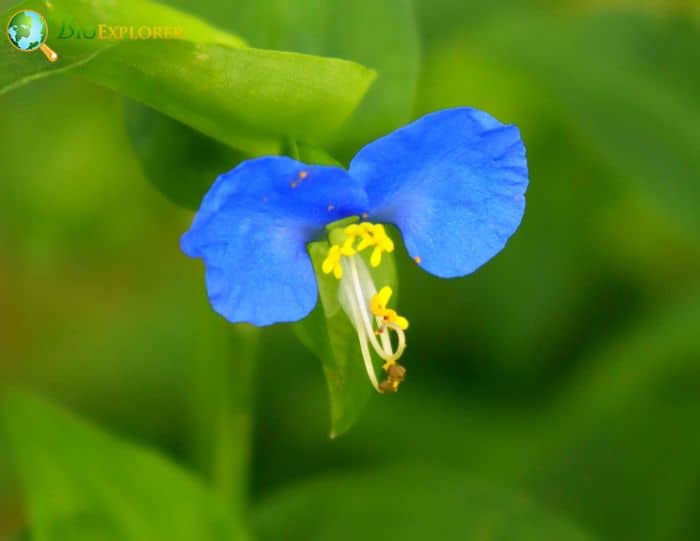
| Plantae | Commelinales | Commelinaceae | Commelina | Commelina coelestis |
Blue Commelina, known as the Asiatic dayflower, shines with blue and purple hues. From summer to fall, the flowers show their colors. They are seen in many states but can grow too well sometimes.
Some people even call them invasive due to their quick spread. Despite this nature, these blooms give a rich blue touch that stands out clearly in your garden.
16. Leadwort/Plumbago
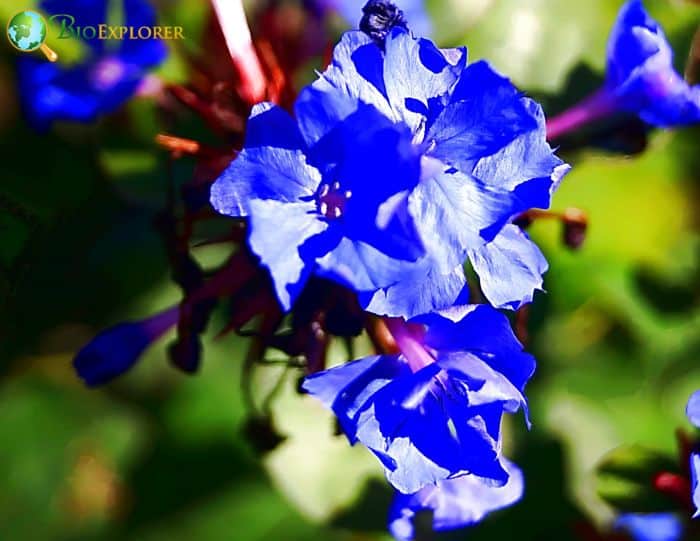
| Plantae | Caryophyllales | Plumbaginaceae | Ceratostigma | Ceratostigma plumbaginoides |
Leadwort, also known as Plumbago, comes from South Africa. It makes blue or white flowers that are beautiful to look at. This plant is good for dry areas and loves the sun a lot. There are many types of this plant.
One type is Ceratostigma plumbaginoides, which have rich blue flowers that stand out nicely in any garden.
17. Blue Giant
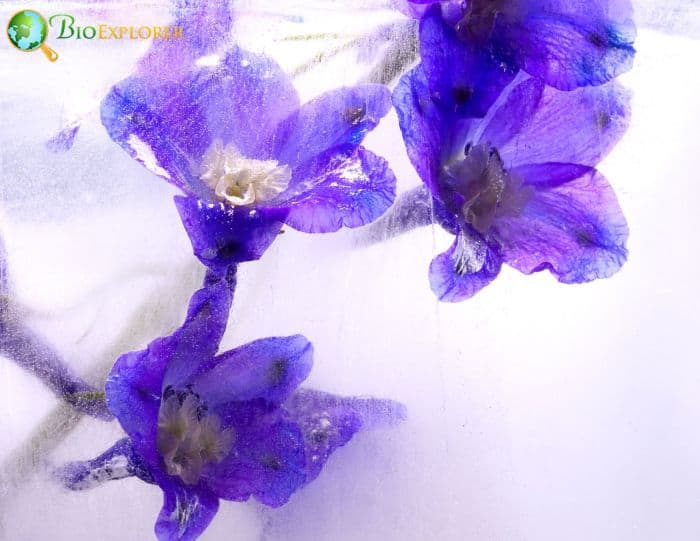
The Blue Giant is a type of flower that lights up your garden. It grows from a bulb and shows off bright blue petals with white eyes. The beauty of the Blue Giant comes out in early spring.
Its sharp bloom gives a dash of color to any planted place.
Gardeners love the Blue Giant for its vibrant hue, often caused by pigments called anthocyanins. This striking shade adds an eye-catching contrast among other plants and flowers in the landscape.
You can never miss this standout piece in any gardener’s land due to its piercing blue tints!
18. Blue Pincushion
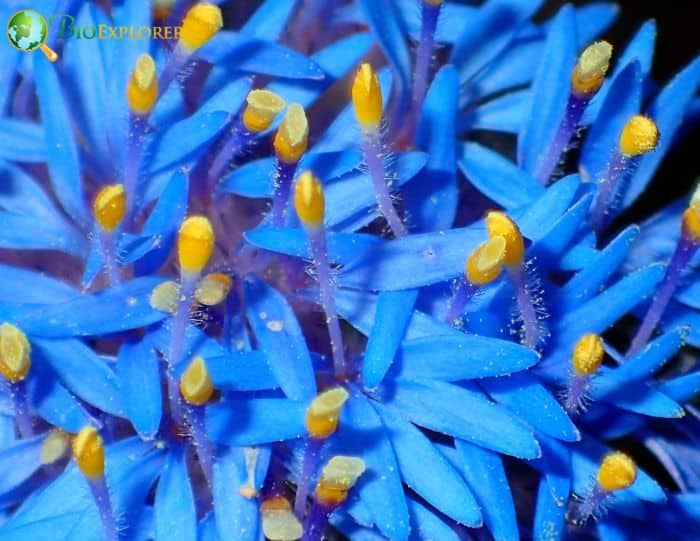
| Plantae | Asterales | Goodeniaceae | Brunonia | Brunonia australis |
The Blue Pincushion is a type of Scabiosa flower. It comes from a plant known as ‘Butterfly Blue’. This plant stays small and neat. Its leaves are grey-green and finely cut. The flowers are a pretty shade of lavender blue.
They bloom for a long time each year, giving more color than other types of Pincushion Flowers.
19. Edging Lobelia
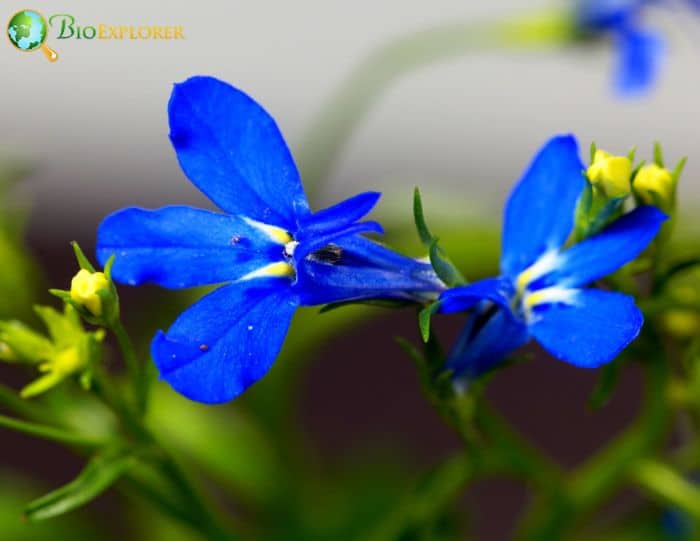
| Plantae | Asterales | Campanulaceae | Lobelia | Lobelia erinus |
Edging Lobelia is a star in any garden. Its thin leaves and mix of blue, purple, or white flowers make it a dream for bordering flower beds. It also shines when perched on the edges of pots or baskets as its stems cascade over the side.
This mounding lobelia type loves being upfront in beds and borders, adding color to your yard with every bloom.
20. Turquoise Ixia
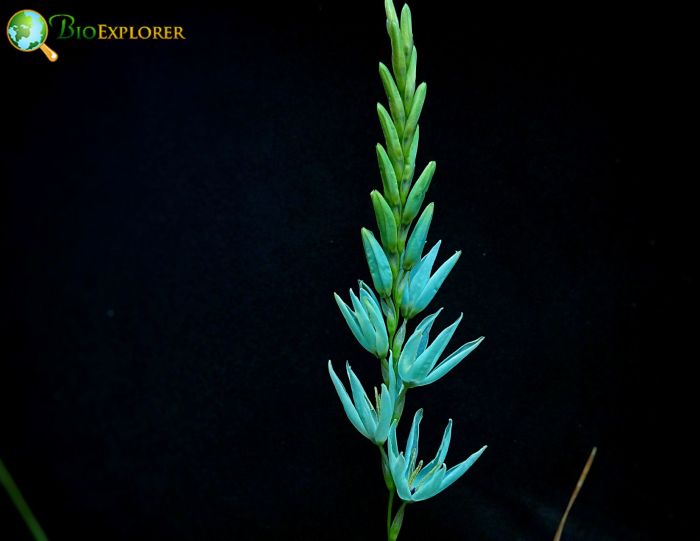
The Turquoise Ixia is the prize of South Africa. This rare flower has six petals with a blue-green hue, just like turquoise! A dark purple-black circle or “eye” lies in the middle.
Many say it’s one of the most beautiful colors in the plant world. The Turquoise Ixia is a close cousin to the Freesia plant, too. It sure stands out as a unique bloom!
21. Love-in-a-Mist
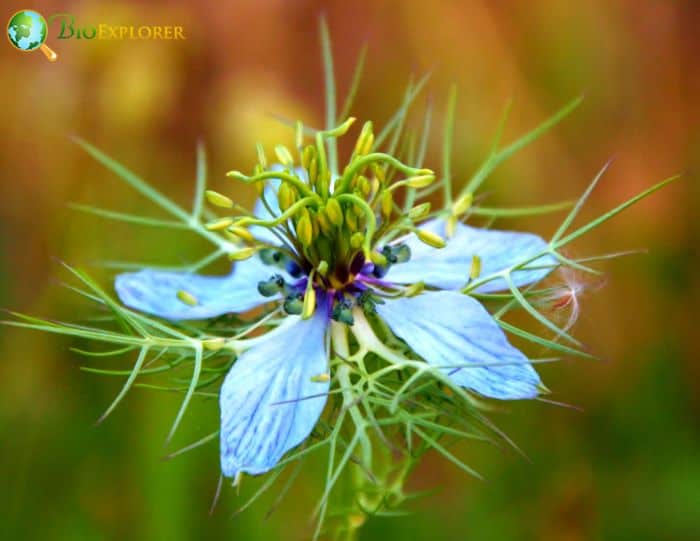
The Love-in-a-Mist flower is soft and striking. It comes in a few colors, like deep and light blue, white, or pink. Its petals are thin yet sturdy; they make your garden look dreamy.
The best thing about this flower is that it can plant itself again!
It holds a lovely story, too. People link the Love-in-a-Mist flower with warm feelings of love and hope. This tiny bloom adds more than just color to your garden – it brings charm!
22. Blue Passionflower
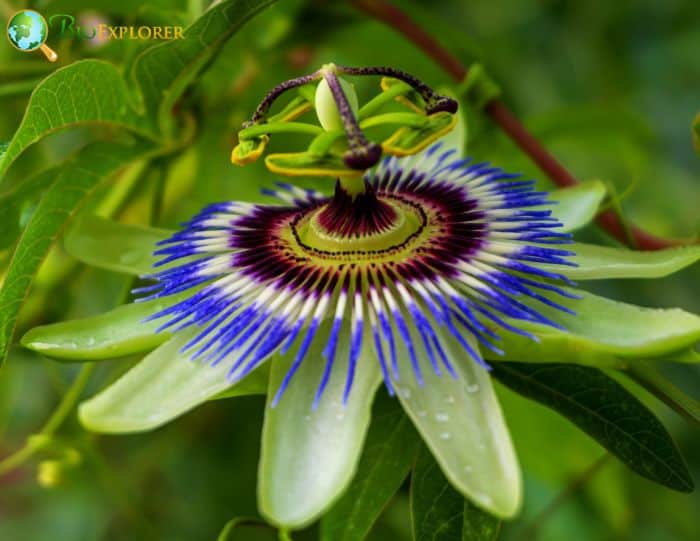
| Plantae | Malpighiales | Passifloraceae | Passiflora | Passiflora caerulea |
The Blue Passionflower is a real gem. Its home is South America. It’s known to science as Passiflora caerulea. This blooming treat belongs to the Passiflora family of plants. You will love its big flowers, about 10cm wide.
These flowers show off their fantastic blue and white colors for all to see.
23. Monk’s Hood
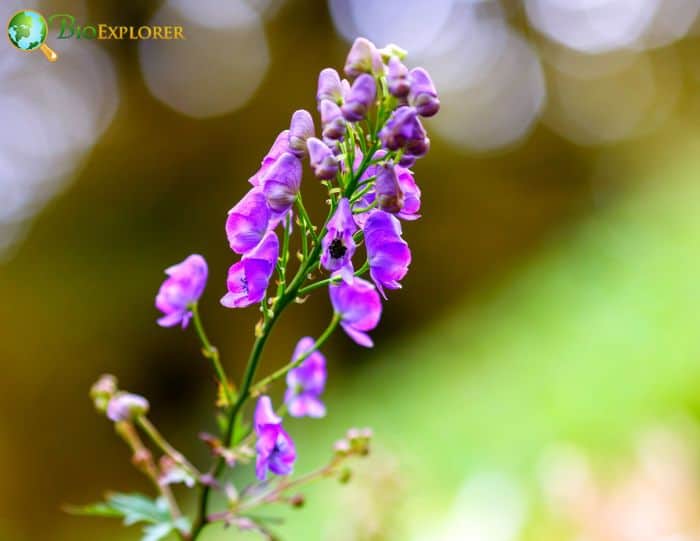
| Plantae | Ranunculales | Ranunculaceae | Aconitum | Aconitum napellus |
Monk’s Hood gives off a dark blue to lavender color. It stands tall and strong in the wild. This flower is known well in Europe and Asia. But be careful around it! Monk’s Hood can hurt you if touched.
Some monk’s Hood goes by Aconitum napellus as their name, with indigo-blue flowers that are light and pretty.
24. Siberian Bugloss
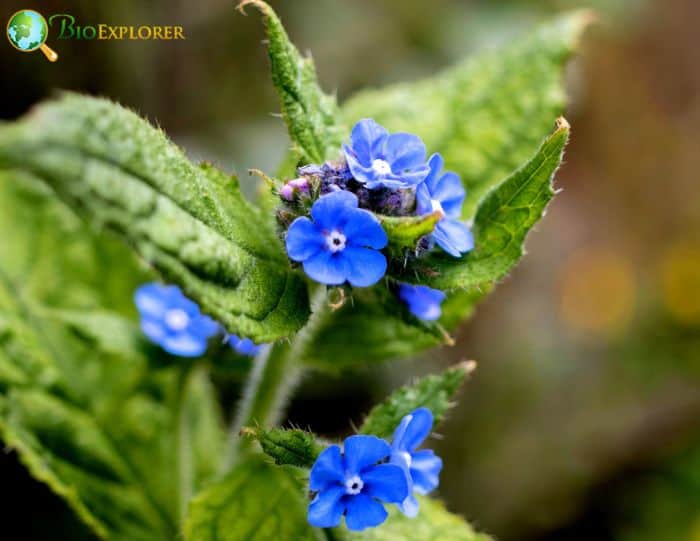
Siberian bugloss stands out with its pretty leaves and deep blue flowers. It pairs well with other blue blossoms in your garden. This shade plant is hardy and thrives best in moist, well-drained soil.
Similar to the Forget-Me-Not, the blooms round off the green foliage perfectly. You might hear it called Viper’s Bugloss too! Indoors or outdoors, Siberian Bugloss will brighten up any corner with its vibrant charm.
25. Butterfly Pea
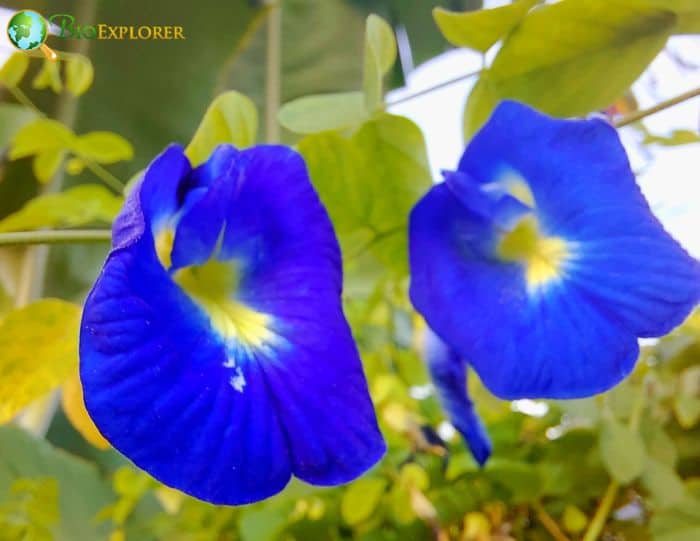
| Plantae | Fabales | Fabaceae | Clitoria | Clitoria ternatea |
Butterfly pea flowers add a hint of sky blue to any garden. This plant comes from Asia and is known for its big, bright blooms. The flower heads are purple and grow in groups of one to three.
They have a special look with a flag, wing, and keel structure.
Not only are butterfly peas eye-catching, but they also offer lots of uses! People enjoy them as herbal tea due to their rich mix of healthy parts that fight off harm. The striking blue color can even be used as a natural fabric dye.
Moreover, the tea made from these flowers does not contain caffeine!
26. Liverleaf
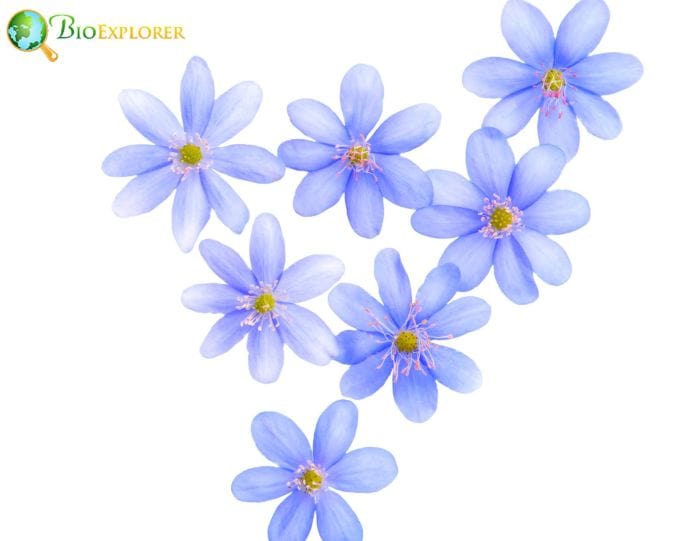
Liverleaf is a gem in any garden. This plant, known as Hepatica nobilis, belongs to the buttercup family. In spring, liverleaf gives us its beautiful flowers before its new leaves emerge.
The blooms come in blue, white, or lavender with a cute yellow center. Liverleaf enjoys shade and fits right into woodland areas well. You can count on this early bloomer for some color when needed!
27. African Lily
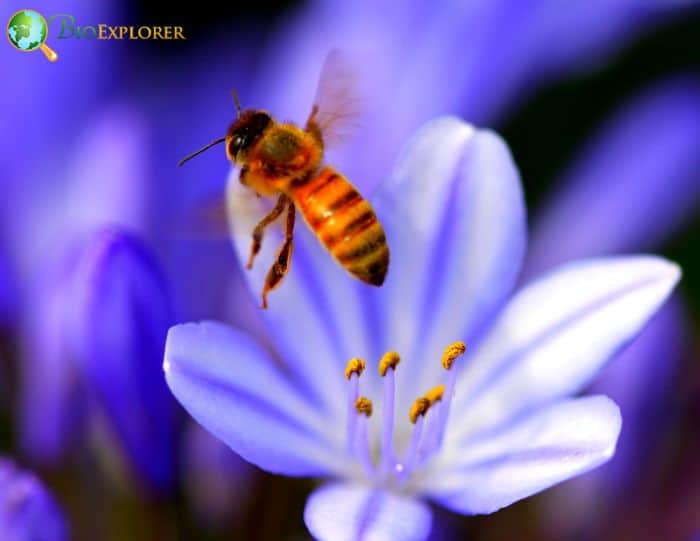
| Plantae | Asparagales | Amaryllidaceae | Agapanthus | Agapanthus africanus |
The African Lily is a sight to see. Its tall stalks hold up eye-catching blue flowers. This plant is loved for its large, ball-like flower groups. You would often find it in gardens as an ornamental piece.
The evergreen African Blue stands out for its special color among the four known kinds of this lily. Thanks to hybrids and cultivars, you can also grow African lilies in other colors not found in wild plants.
28. Siberian Squill
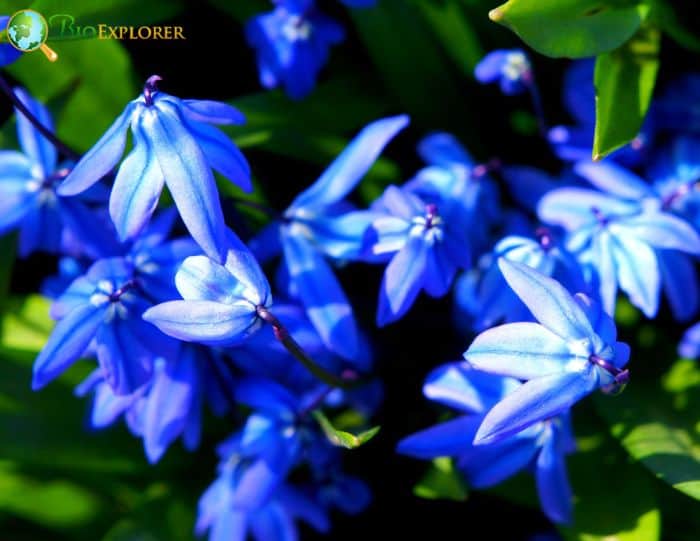
| Plantae | Asparagales | Asparagaceae | Scilla | Scilla siberica |
Siberian Squill, or Scilla siberica, is a strong plant that likes the cold. The flowers form a bell shape before they open fully. They show off hues of white, pink, or blue-violet.
But be careful! This plant can harm people if touched or eaten. It’s a bold choice for any garden looking for splashes of color in early spring.
29. Jasione Montana
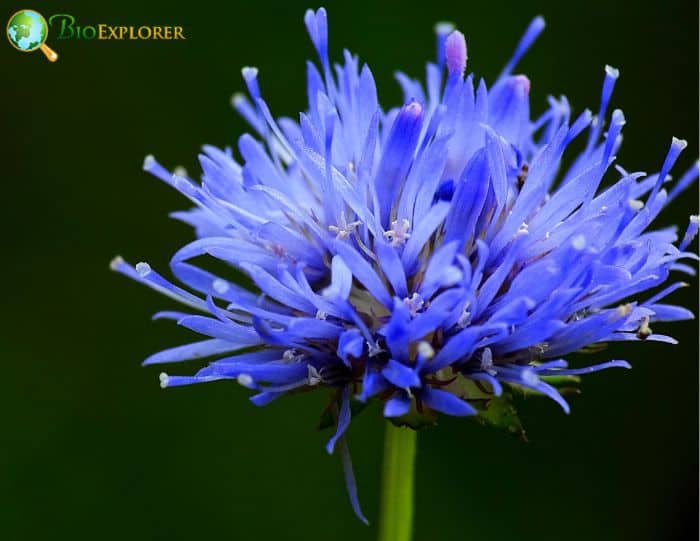
Jasione Montana is a small green plant. It belongs to the bellflower family. This plant has flowers that are violet-blue in color. Often, these blossoms come together in groups or clusters.
The lobes of these flowers are thin and long. The colors can change from blue to purple, pink to red, and even white! Jasione Montana comes from places like Connecticut, Massachusetts, and Rhode Island.
It blooms every year from May until September.
30. Bluebell Bellflower
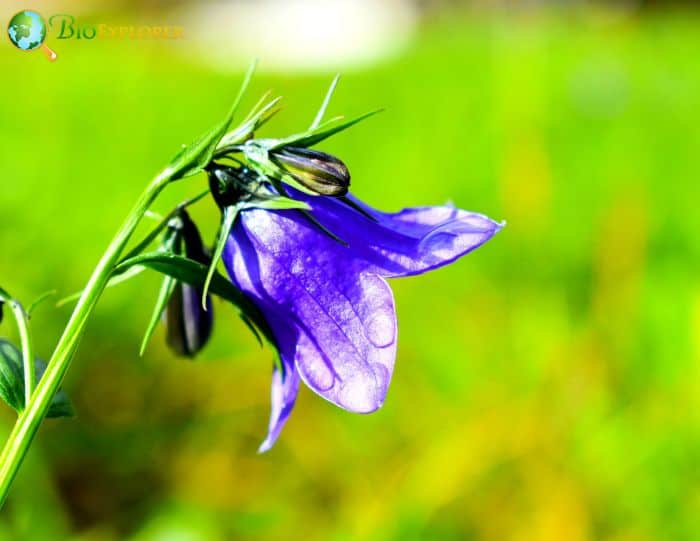
| Plantae | Asterales | Campanulaceae | Campanula | Campanula rotundifolia |
The Bluebell Bellflower shines in shades of deep blue. It has a bell shape with six petals that turn up at the tips. Look for it in fairytales from Europe about fairies and dreams! The sweet smell is strong as the flower nods to one side when matured.
You can find different kinds like the British, Scottish, and Virginia Bluebell. These striking flowers bring magic wherever they grow.
31. Baby Blue Eyes
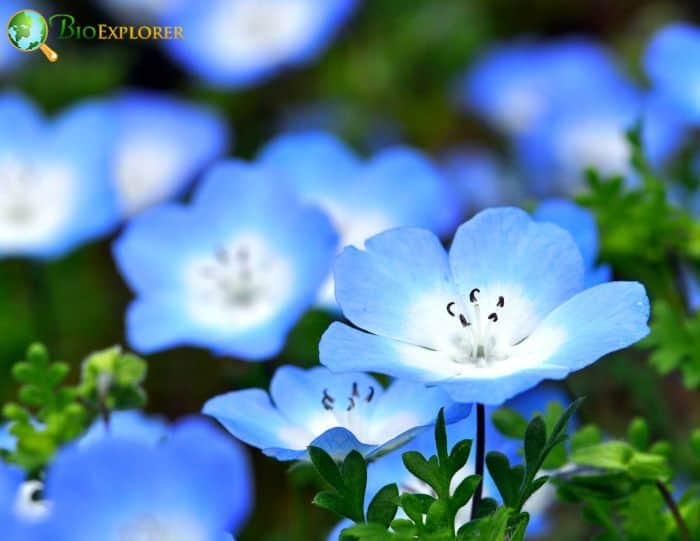
| Plantae | Boraginales | Hydrophyllaceae | Nemophila | Nemophila menziesii |
Baby Blue Eyes is a bright, yearly flower loved by gardeners. These light blue flowers have five petals and shades of blue, white, and purple. These flowers stand low to the ground and bloom from late winter to summer.
Many people see them near wet woods in California. Their pop of color makes any landscape better looking!
32. Blue Orchid
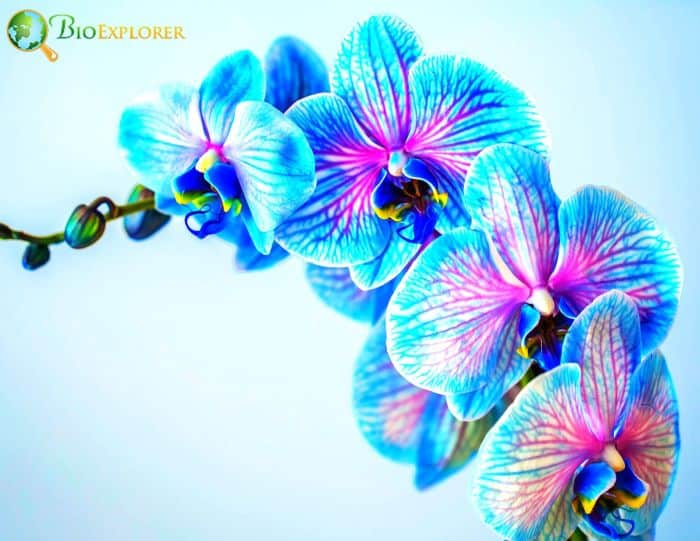
| Plantae | Asparagales | Orchidaceae | Vanda | Vanda coerulea |
The Blue Orchid is a rare and stunning flower. Its striking blue color pops out in any garden. This plant catches the eyes of everyone who sees it. Many people link it to elegance and grace because of its beauty.
The strong energy from Blue Orchids can calm your mind, too. It has ties to the throat chakra and helps with communication as well.
33. Blue Star
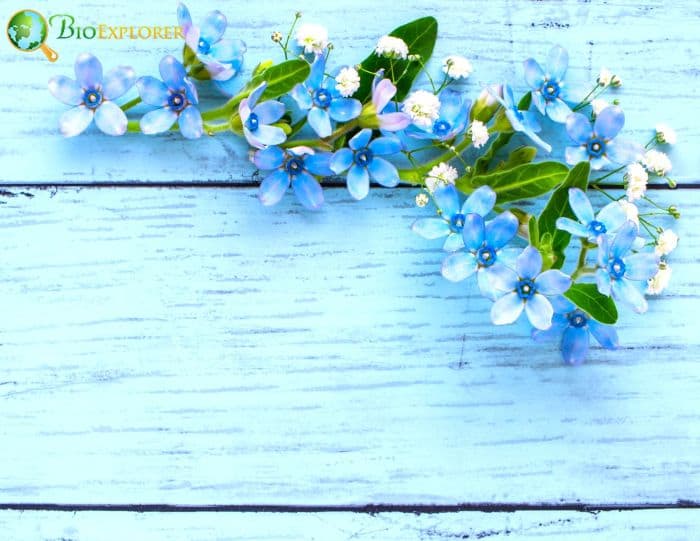
| Plantae | Gentianales | Apocynaceae | Amsonia | Amsonia tabernaemontana |
Blue Star is a flower that brings beauty to any garden. This flower, Amsonia species, lights up your garden in the spring. It has pale blue petals that hold a lot of charm.
People love this flower because it shows strength and can last long.
In fall, Blue Star shows off its golden foliage. That makes it nice to look at even when it’s not spring. The fact that Blue Star is a native plant means it can grow well in many places.
It’s surely an amazing gift from nature!
34. Blue Violet
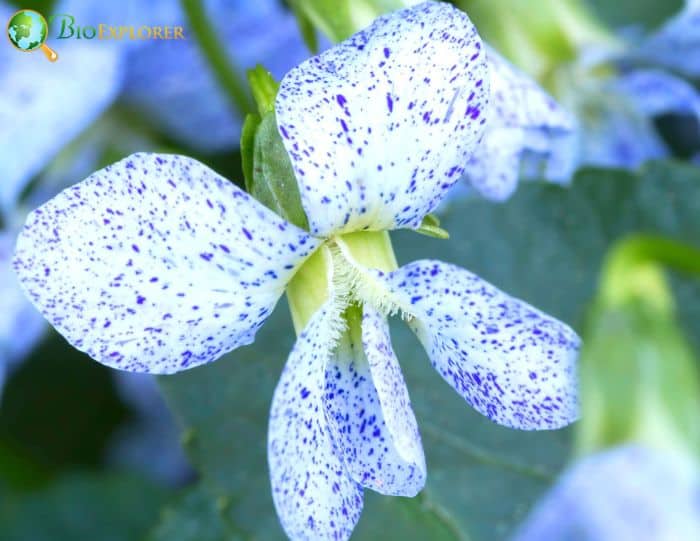
| Plantae | Malpighiales | Violaceae | Viola | Viola sororia |
The Blue Violet is a special flower. Also known as Viola sororia, it grows well in North America. Some think it is a weed because it can spread quickly. It has pretty colors that move from blue to white with purple hints.
The shape of the flower is like a heart, and its bloom looks like a blue blossom with a white throat. With 61 types of blue flowers, the Blue Violet sure stands out!
35. Blue Hibiscus
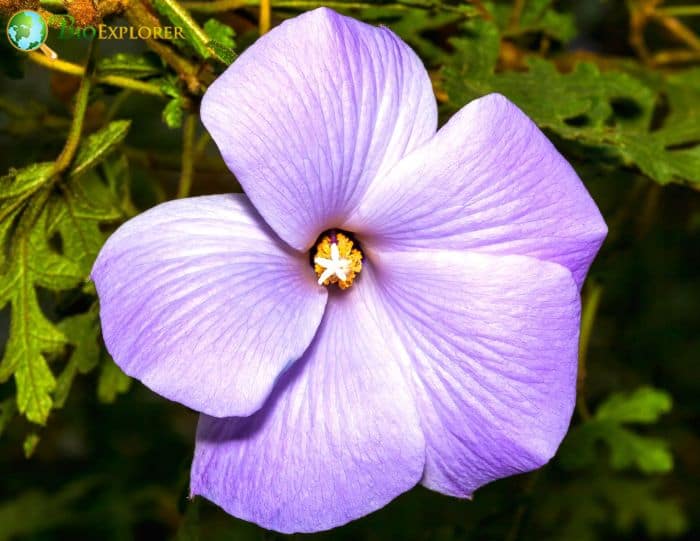
Blue Hibiscus stands out in the garden. It links to Mallow plants and shows off shades of purple, mauve, pink, cream, white, and Lilac. You may hear it called Alyogyne huegelii, too.
The blue hibiscus is a must-have for those who love cool-colored flowers. Its blooms also come in grays, browns, and well-known blue hues. This adds a nice twist to any flower collection!
36. Blue Mist Shrub
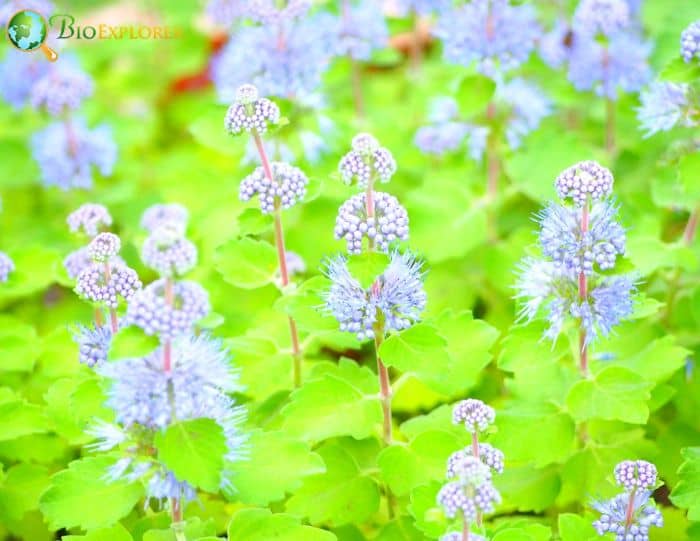
| Plantae | Lamiales | Lamiaceae | Caryopteris | Caryopteris X clandonensis |
Blue Mist Shrub grows well in hot summers. It can also live without a lot of water. The plant is small, so you can put it on the border of your garden beds. This shrub is also called Caryopteris Blue Mist Shrub, blooms late, but when it does, its flowers are true blue and stunning.
Bees and butterflies love these delightful blooms too!
37. Blue Daisy
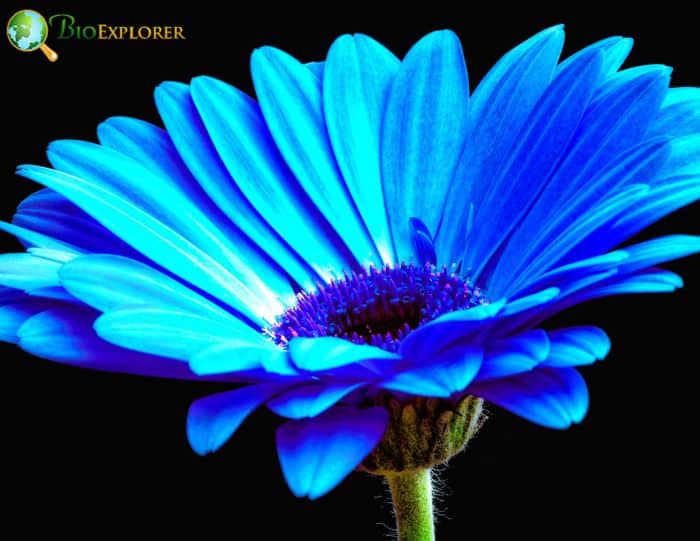
| Plantae | Asterales | Asteraceae | Felicia | Felicia amelloides |
Blue daisies burst with calmness and peace. bees and butterflies can’t help but visit these blue blooms for their nectar. Unlike many flowers, they don’t have a scent. This makes them perfect for people who love the look of gardens more than the smell.
The plant is soft to the touch because of the tiny hairs on it. It keeps its green leaves all year round, making it an evergreen plant. Its other name is the felicia flower, but most folks know it as the blue daisy.
38. Azure Aster
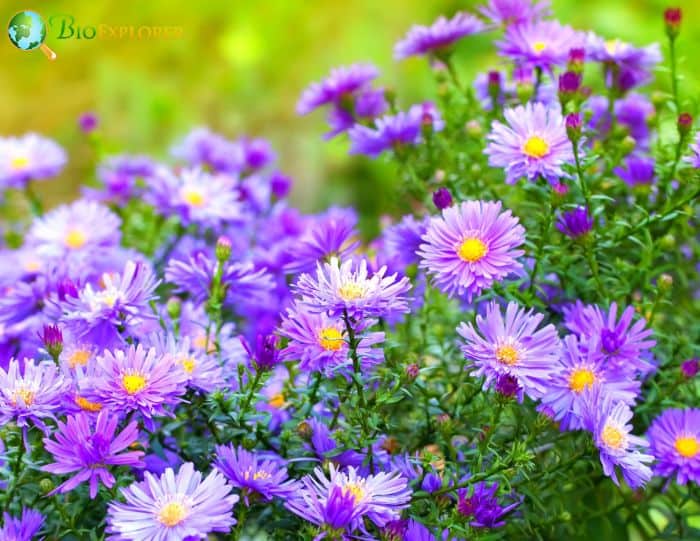
| Plantae | Asterales | Asteraceae | Symphyotrichum | Symphyotrichum oolentangiense |
The Azure Aster is a North American plant. It makes blue, daisy-like flowers late in the summer. The flower heads sit on open and loose branches. This plant grows its leaves out in different ways during warm months.
39. Dwarf Morning Glory
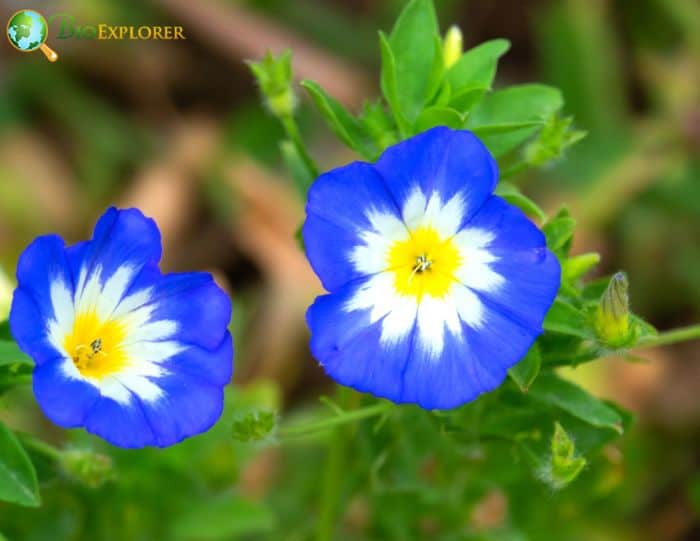
| Plantae | Solanales | Convolvulaceae | Convolvulus | Convolvulus tricolor |
Dwarf Morning Glory shines as a plant with small but bright blue flowers. The green leaves are fuzzy and shaped like an oval. The flowers surround the leaves, making it look like a blue carpet.
This plant thrives best when put under full sunlight. After you plant it in your garden or pot, it does not need much care. Blue Dwarf Morning Glory is one kind that people love for its true-blue blooms and silver-green leaves.
40. Fairy Thimbles
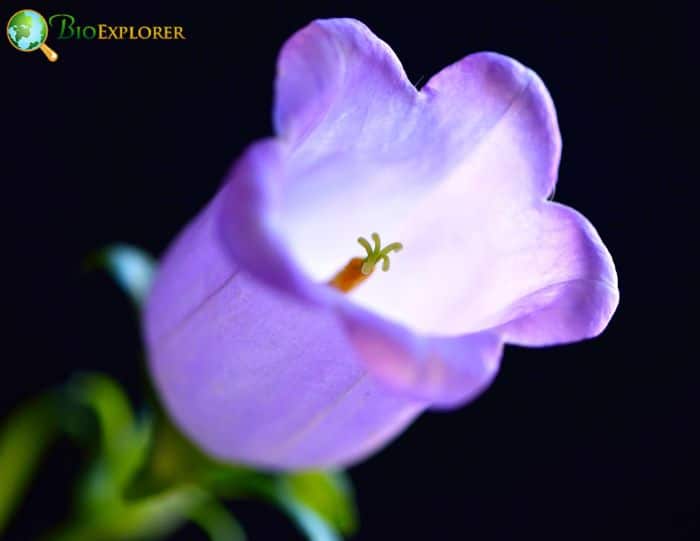
Fairy Thimbles is the cute name for the Campanula cochleariifolia plant. In the wild, they live in the French Massif Central region. The tiny flowers bloom in shades of blue, violet, or white.
People love them because they look like bells and are very charming. Gardeners use them to make their gardens beautiful, too.
41. Triplet Lily
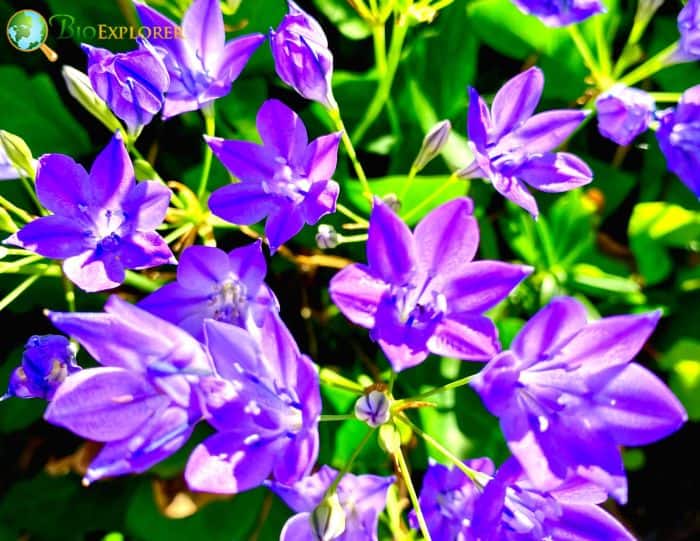
| Plantae | Asparagales | Asparagaceae | Triteleia | Triteleia laxa |
Triplet lilies have a pretty face. People also call them Wild Hyacinth. Each plant grows small stalks sprouting with light blue blooms. These plants show off their beauty in early summer.
You know the triplet lily by other names, like “Triteleia laxa” or “Brodiaea laxa“. You can spot them by their spray of blue or purple flowers on each stalk. Make your garden more colorful with triplet lilies!
42. Tweedia
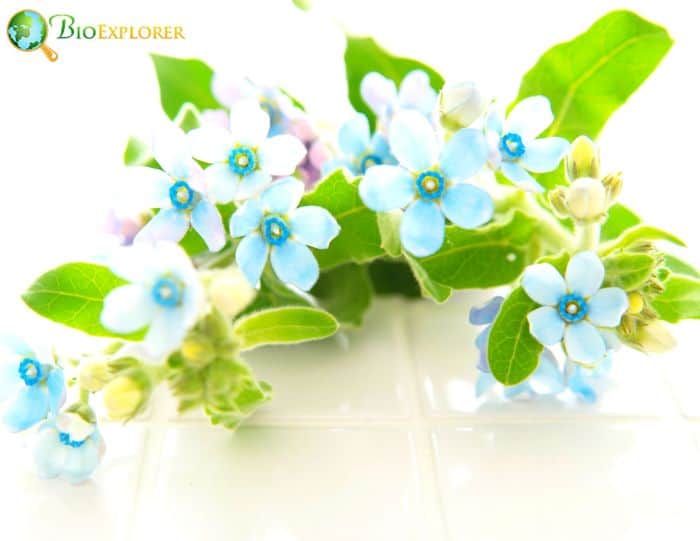
| Plantae | Gentianales | Apocynaceae | Oxypetalum | Oxypetalum coeruleum |
Tweedia is a special kind of blue flower. Its turquoise, star-shaped blooms and greenish-felted leaves make it unique. It shines all summer long. This plant has the only milkweed species with blue flowers! Tweedia also goes by the name Tweedia caerulea.
Its heart-shaped leaves give it extra charm. Good news comes to those who grow tweedia in their garden – this blue beauty stands for serenity, happiness, and good luck!
43. Georgia Blue Veronica
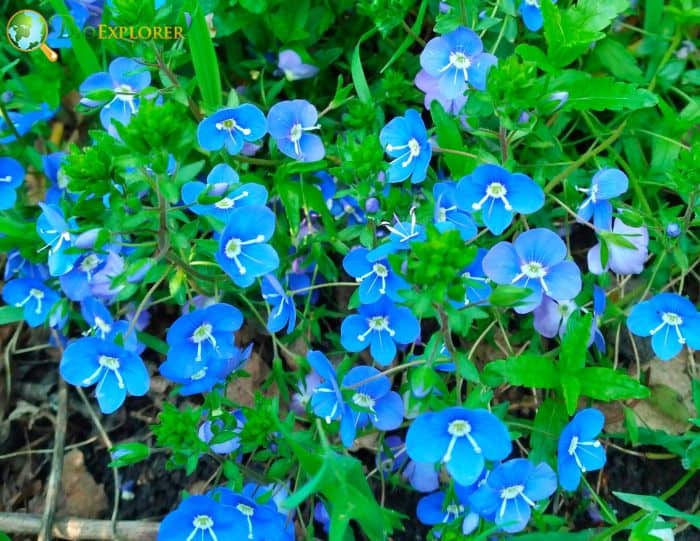
Georgia Blue Veronica is a small plant that gives out rich blue flowers. It does not grow tall, which makes it fit well in low areas of your garden. The leaves are dark green in the hot months and turn reddish when it gets cool.
These plants are called Creeping Speedwell or Speedwell because they spread easily on the ground.
Symbolism of Blue Flowers
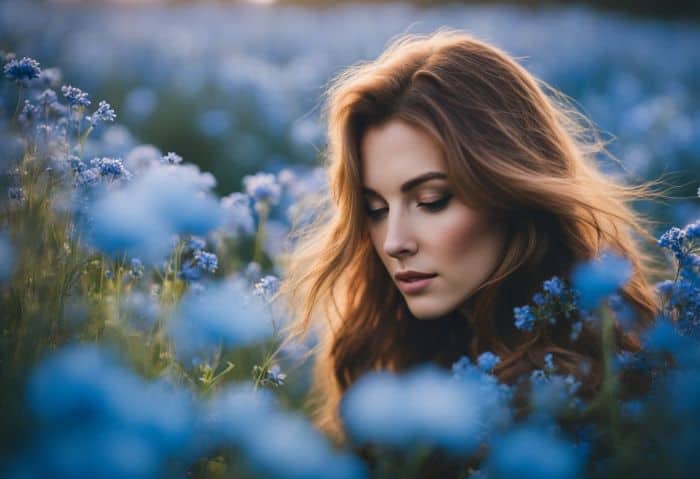
Blue flowers carry special meanings. They stand for desire, love, and inspiration. When you give someone blue flowers, it can show your deep feelings for them. It tells them they inspire you.
There is more to the meaning of blue flowers too. For example, blue hyacinths have their own symbolism. These beautiful flowers are all about devotion, sincerity joy and rebirth.
If a person gets a gift of blue hyacinths, it tells them that the giver values their loyalty and truthfulness. Also, these gifts link to calmness and spiritual enlightenment.
Different shades of blue in flowers also come with different meanings.
Think about this as you choose your next bunch of flowers!
![]()
Frequently Asked Questions
You may find it odd that blue flowers show up in nature. They exist, but they use a blend of pigments to create their blue hue. Some nice ones for your garden are Forget-Me-Nots. These flowers have light-blue petals and yellow centers and bring a soft touch to any garden.
Blue flowers come with many different meanings tied to them. Most good thoughts about these colors involve feeling quiet and at peace. Besides being serene, people like how stylish they look when used in floral design.
The Texas highways often shine bright with peaks of Bluebonnets during springtime’s full bloom in April. Their stunning blossoms attract busy bees and fluttering butterflies seeking sweet nectar! If you play Blox games, you might be aware that these rare beauties can spawn quite often there!
One type of blue flower is native – the Scabiosa or pincushion flower! Boasting hues from pure white to rich blues; it’s an excellent choice if you wish for some variety in color tone among your botany collection.
Do blue flowers exist in nature?
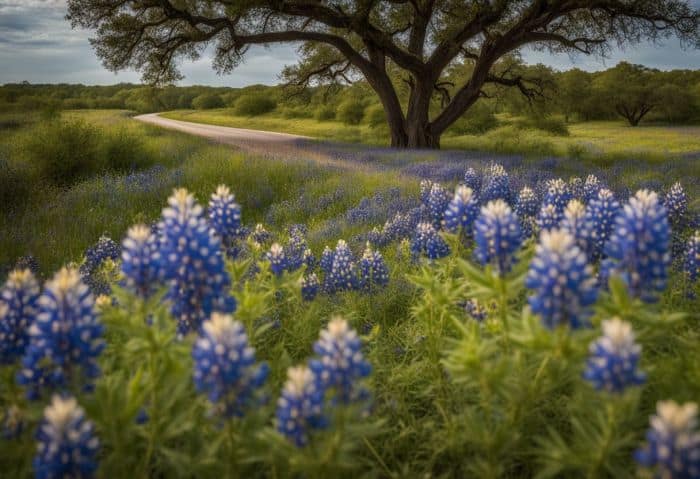
Yes, there are blue flowers in nature but they are a rare sight. This is because true blue pigment does not naturally appear in plants often. Blue flowers you might find include forget-me-nots or hydrangeas.
Some of these have names and pictures to help you identify them.
Most common flower types like roses, chrysanthemums, lilies, and carnations don’t come in blue shades without human help. They need special care from expert gardeners to give them a boost to turn into this unique color.
Even so, their kind with wind pollination is found more often compared to others.
![]()
What is the meaning of blue flowers?
Blue flowers have deep meanings. They stand for desire, love, and the push for what seems out of reach. They bring feelings of peace and calmness. If you see a blue flower, it can show affection too.
These flowers also link to good health and joy.
![]()
Which blue flowers are suitable for my garden?
Many blue flowers can make your garden look lovely. The Blue hibiscus is one good option. Its unique color can light up your garden in no time. Then there’s the Colorado Blue Columbine. This blue flower adds charm to any space it is planted in. Adding to the list, you have Common Hepatica and Narrowleaf Blue-Eyed Grass. These blue flowers are a treat to eyes and hearts both.
![]()
Can you suggest some plants with blue flowers that bloom?
Blue flowers add calmness and beauty to any garden. They also bring a touch of peace and openness. You can pick fresh or dried blue flowers for your bouquets. Here are some plants with blooming blue flowers:
- Lupinus, or lupins, have tall spikes of blue blooms that look stunning in gardens.
- Iris reticulata gives off deep blue petals that are a feast for the eyes.
- Hydrangea is perfect if you want large bushels of blue.
- Bluebells are charming flowers with a gentle curving shape.
- Dandelions, not just yellow but also in beautiful shades of blue, hold a special place in folklore and cultures as symbolic blooms.
![]()
What are the blue flowers on the side of the road?
The blue flowers you see on the side of the road are likely chicory. They come from the aster family, much like dandelions. You can find them in many parts of North America, but they first came from Europe.
Chicory flowers have a bright blue color that stands out.
People often use these plants as medicine. As herbaceous plants, they carry health benefits similar to other medicinal herbs used in traditional remedies. So next time you see these striking blue wildflowers during your drive or walk, know that it’s chicory smiling back at you!
![]()
What do the blue flowers symbolize in lord of the Flies?
In Lord of the Flies, blue flowers are not just pretty. They have a deep meaning. They stand for love and want. Things we can’t touch or see tie into these flowers too. The boys feel calm, quiet, and still when they look at them.
Even with all the fire and smoke around, these special flowers can still be seen in the story’s pages time and again.
![]()
Do blue flowers appear in a variety of shades?
Yes, blue flowers show up in many shades. They can be light like a baby’s blanket or rich like the night sky. Blue irises and hydrangeas are good to study for this. These plants have bright blues but also powders and pastels too.
They create magic in any garden or floral arrangement! Don’t miss out on lilac blossoms either – their color is right between purple and blue, so they often look wild as violet hues shine through them.
So, remember, it doesn’t matter where you find your flower – from hardy landscape types to dainty wildflowers – each holds a surprise of amazing tones within its petals!
![]()
Are blue flowers often used in floral arrangements?
Yes, blue flowers are used often in floral decorations. These rare flowers bring a cool color palette to any design. You can see the beauty of Larkspur flowers at flower shops. Blue roses have a special meaning too.
They talk about love that is hard to get or understand. They are perfect for big events and parties. Different types of blue flowers make the bouquet look beautiful!
![]()
Do blue flowers attract bees and butterflies?
Blue flowers are like a feast for bees and butterflies. The tiny size of blue flowers makes them a top pick for many bees. When light hits the petals, they give off a soft blue glow due to their nanoscale structures.
This color is both beautiful and inviting to pollinators in search of their next meal.
Of course, it’s not just about seeking out beauty for these insects! Flowers use color and sweet smells to catch attention from far away. White, yellow, or blue-colored flowers often have more nectar-a big plus point for hungry bees.
Butterflies too find the sweet smell hard to resist! Most come flying when they sense plants with fragrant, nectar-rich blooms nearby. Therefore, planting an array of vibrant colored especially blue flowering plants can make any garden filled with lovely butterflies and busy bees working all day long.
![]()
How often do blue flowers spawn in blox?
Blue flowers show up in Blox Fruits only at night. You cannot find them during the day. The highest chance to see blue flowers is by looking for them after sunset. Players have some ways and places to look to help find more blue flowers.
These tricks can make finding blue flowers easier.
![]()
Can you recommend a blue flower native to a specific region?
Sure, there are many blue flowers native to different areas.
- Pickerelweed is a lovely choice. This wildflower has rich blue hues and grows in the wetlands of the United States.
- Bluehead Gilia is another option. It is a native flower found in the Western regions.
- If you live in California, think about growing Blue Flax. This short – lived flower can also thrive as a perennial in some places.
- From the Mediterranean region, we have Anagallis foemina or Blue Pimpernel.
- Other striking choices include worldwide favorites such as hydrangea, bluebells, forget-me-nots, and sea Holly.
- Also, consider pollinator flowers with bright purple – blue flowers if you want to attract bees and butterflies during late summer and fall.
![]()
Which blue flower is known as a pincushion flower?
The Scabiosa plant is known as a pincushion flower. This blue flower gets other names too. Some people call it sweet scabious, mourning bride, or garden scabious. Its flower heads are blue and have five small parts.
Pincushion flowers make little dry fruits that each hold one seed inside them. You can also find this type of plant with different colors of flowers like white, Rose, crimson and a deep purple that looks like mahogany wood.
![]()
Why do people use blue flowers often?
People love blue flowers for many reasons. They see them as signs of the Virgin Mary in Catholic traditions. This brings a special warmth to their hearts. Blue color stands for desire, love, and ideas that light us up from inside.
Blue flowers also give out calm vibes that make people feel at peace. Besides peace, blue is known to drive away bad energy too! It’s like having your very own shield against sadness! The blue blooms tell us about truth and being loyal.
That makes it a favorite pick among those who value Honesty above all else.
![]()
Are different shades available in the variety of blue flower plants?
Yes, blue flowers come in many shades. You may see cobalt blue, purple or even lilac flowers. These are all types of blue plants. Lobelias are a good example. They can be cobalt, scarlet or lilac! Some people think they’ve seen rare true-blue wildflowers out there.
But most times, those are just purple or green blooms that look like blue ones to the eye. Blue hibiscus is another plant you may find interesting. It grows in a variety of beautiful blue hues.
![]()
Do we have native and non-native blue plants with stunning blossoms?
Yes, there are both native and non-native blue plants with stunning blossoms.
- The Teasel is a plant found in the United States. It has prickly stems and purplish – blue flowers.
- The Narrowleaf Blue – Eyed Grass is a native blue wildflower in the Iris family.
- Blue Corydalis is a plant from China. These plants grow in woodlands and mountains.
- Bluebells or Hyacinthoides non-scripta, have bell-shaped petals that droop to one side.
- Scilla Siberica, also known as Siberian Squill, have 6 petals and a darker blue stripe.
- The bright purple – blue flower of the Native Pollinator Perennial and Annual Flowers attracts many bees and butterflies.
![]()
What tree has blue flowers?
The Empress tree lights up gardens with charming blue flowers. It bears another name, the Princess tree or Paulownia too. Its blossoms are a delight, shifting in hues from lilac blue to deep purple-blue.
In spring, the sweet scent of tubular-shaped clusters fills the air. The Blue Chinese Wisteria and Jacaranda trees also adorn themselves in stunning blue attire. These blooms not only add color but also charm to any garden they grace.
![]()
When do my favorite deep-sea-hued Delphiniums blossom its spires-of-flowers?
Delphiniums, commonly known for their tall spikes & powdery bluish-purple petals appearance, start displaying their beauty in late spring filling up your backyard as a sea-of-ethereal-smoky-blueness!
![]()
Blue flowers bring peace and beauty to any garden. With their bright colors, they catch your eye. They stand out because blue is rare in nature. Next time, plant some blue flowers and see their charm light up your yard!


